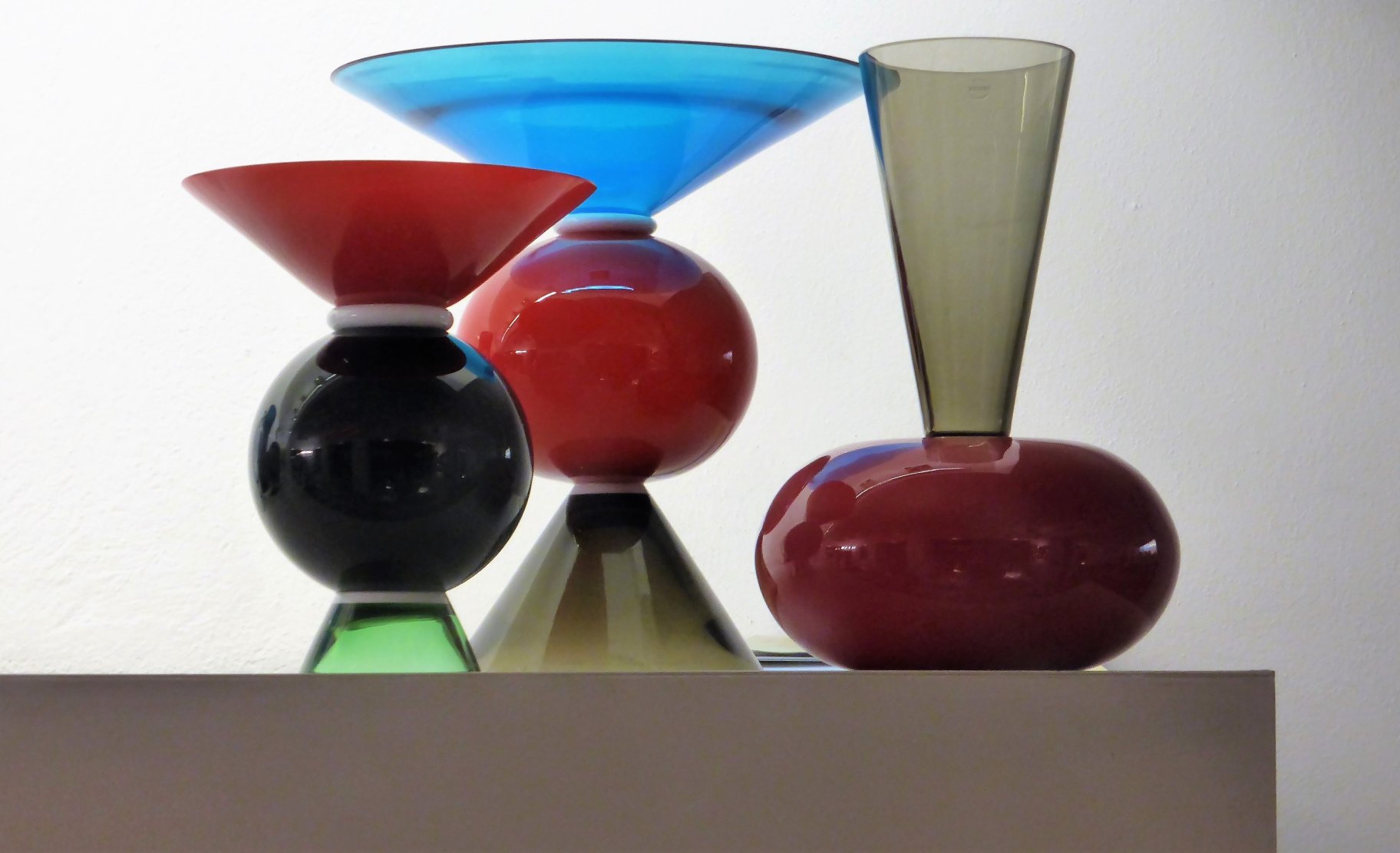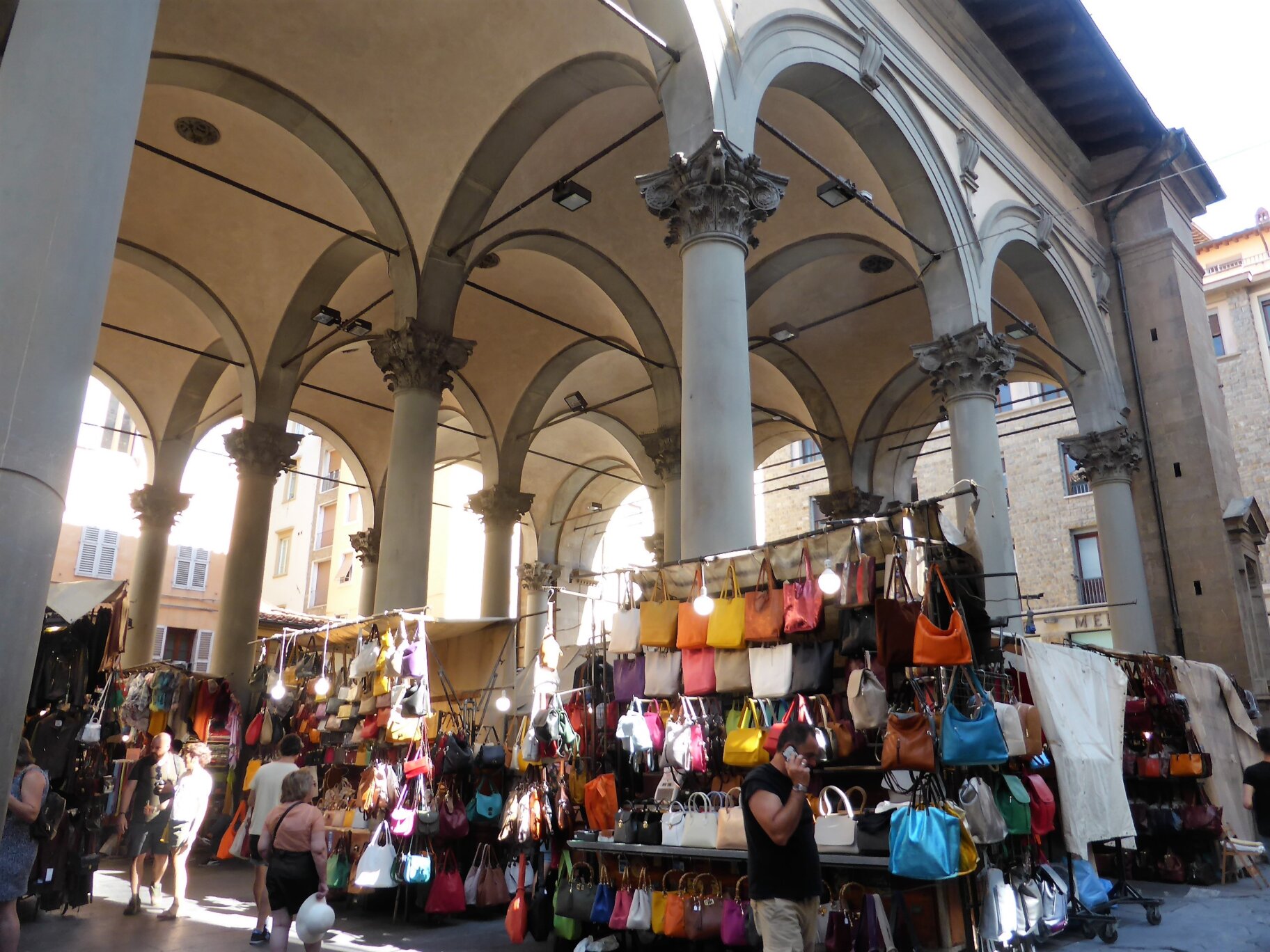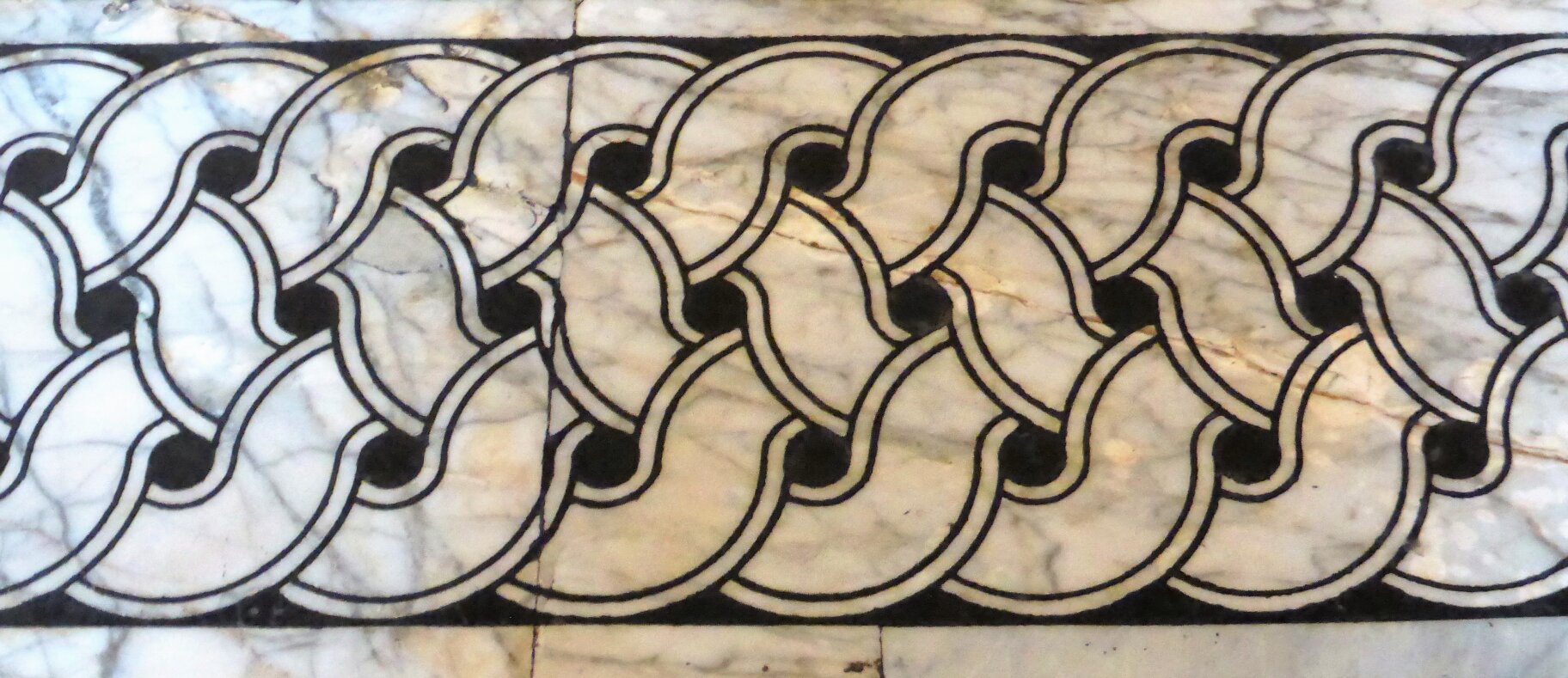Gestalt – an Introduction
Ulrich Gehmann
The following contribution is about a notion long forgotten: gestalt. It refers to an anthropological necessity, namely the ability to conceive wholes, entire contexts, and the unity of both perceiving and conceiving as a precondition to do so. Gestalt relates to another notion, that of order, as well as to another deeply ingrained in modernity, the concept of wholes as systems. ‘System’ is a technical concept, as is the notion of network, a cipher for another modernist idea about wholes, which superseded the older term ‘system’.
Another notion related to gestalt is pattern, a term widely used for any kind of regularity – of developmental processes, other dynamics, structural similarities, and more. But gestalt is not identical with pattern; every gestalt equals a certain pattern, but not every pattern is eo ipso a gestalt.
Ideal spaces and experience: gestalt
Ideal spaces as symbolic spaces have to be properly conceived: as entireties, as wholes. Again, this discussion relates to aesthetics in the above sense: the ability to conceive and to comprehend wholes, rather than parts. The whole is more than just the sum of its parts, and that ‘more’ is the issue of gestalt. According to Aristotle, gestalt reveals the very nature of something, its essence. As Heidegger said, gestalt is a “way of Being”, independent of the specific materiality with which it had been realized.1 Gestalt is not identical to form. Gestalt denotes the inner context that makes up something’s nature, its identity, whereas form denotes the specific manner or ‘style’ in which that inner context is realized. Gestalt stands for the network of relations between things, not the concrete forms that these may take. It is equivalent to a form complex, architect Kevin Lynch states, “as a whole whose parts are interdependent and are relatively fixed to each other.” Outside such a form complex gaps of identity will occur.2

Gestalt expresses the basic architecture of something, as seen in the above image. In formal terms, gestalt is the connection between structuring elements; according to Viollet-le-Duc, it is a type of structuring that becomes perceptible.4 Central is the nexus between perception, processes of conceiving, and identity. Gestalt provides identity. Decisive for gestalt perception, according to Lynch, is the continuity of perception, which allows for perceiving even complex realities as a consistent and unified whole. Gestalten are “vivid connections” that are actively perceived and endowed with an emotional component;5 their perception is a unified experience. Gestalt does not translate into English but can be described in the following terms: “[…] the German Gestalt means organic, living form, as distinct from inanimate form (denoted in German by Form) […] living organisms perceive things not in terms of isolated elements, but as integrated perceptual wholes – meaningful organized wholes, which exhibit qualities that are absent in their parts […] In Gestalt theory, the individual parts making up these patterns gain their value from their participation in the pattern of the whole Gestalt.” 6
Gestalt perception is an anthropological necessity, and therefore a basic trait of a conditio humana. We need the proverbial “overall picture” in order to judge things. For Goethe, founder of a morphology on a systematic basis, gestalt perception rests in “anschauender Urteilskraft”, a holistic power of judgement that not only (and merely) rests in analysis and discursive heuristics, but in intuition and hermeneutic capabilities.7 In this respect, gestalt perception strongly relates to imagination; it is an “Erlebnisganzes”, an inseparable unity of perceiving and actively experiencing.8

Gestalt constitutes a quality that cannot be derived from only knowing the parts of a whole. In his Philosophy of Symbolic Forms Cassirer states that the whole does not arise first out of its parts; on the contrary, it is the whole that constitutes these parts and gives them their meaning.10
Or, expressed in a more formal manner by Giorgio Vasari, an Italian artist and art historian who inherited Renaissance traditions: gestalt perception is about proportions, namely (1) the relation of the whole to its parts, (2) the relations of these parts to each other, and (3) the relations of the parts to the whole.11 One can take the above image as an example.
Gestalt and order
The issue of proportions raises the question of order: as a structured whole, gestalt resembles a specific kind of order. Embracing this idea of order was essential for modern system theories; that is, if gestalt stands for order, the old idea of gestalt remained and survived in those modern-day conceptions, albeit in disguised form. Those theories attempted to conceive wholes (“gestalten”) no longer in a hermeneutic, but in a technical manner, namely as ‘systems’. 1

What is order? In formal terms, it is a state of Being characterized by fixed relations between elements over time. With regard to these relations in terms of time, they keep a more or less constant relationship, as is evident in the above example. “More or less” points to the fact that changes in this relationship can occur over time; the above order can get destroyed after some time, without even being replaced by other orders. But despite such historical and evolutionary changes, a certain structural constancy in time remains a basic assumption when we speak about ‘order’ and orderliness.
This applies not only to static structures, but also to dynamic orders, to the idea of a processual order; e. g. the order of a production process or of seasonal changes. If we consider both statics and dynamics, regularity and constancy over time are decisive criteria for a ‘system’ to be ordered. The very idea of a system relates to order: according to modern system theorists, when we conceive regularities or arrangements, a formation.14 In its general, philosophical terms, a system is defined as an entity “whose single components, through their necessary difference, are mutually conditioning and demanding themselves.” This definition is expressed in visual terms in the above image.
This mutual conditioning is already expressed in the origins of the idea, the imagination about what a ‘system’ is. In its Greek origins, a system is systema, “that which is composed”, denoting an ordered wholeness, whose elements are arranged in such a way that they form a harmonic entity. In such a way, the notion of a ‘system’ not only relates to gestalt but also to harmony; as seen in the Greek context, the mutual coincidence of the parts make up a composed whole.15

Just like system and order, these notions too relate to ideas affiliated with gestalt, namely ones of beauty and in connection with it, of ‘harmonic’ proportion, both mirroring a certain kind of order and gestalt. Here too, the origin of ideas and their mutual developments (an ‘order’ of its own) reveal a culture’s basic imagery, transferred through the ages as a so-called cultural heritage. A heritage which is still alive today, albeit appearing in changed, or even camouflaged form (as in the case of the ‘system’). Beauty, states Aristotle, is the result of the relation that exists between magnitude (extension) and order, in accord with a human measure. In formal terms, it is concinnitas, as the Renaissance architect Alberti called it, the unification of elements into a whole, resulting from their proportional accordance (finitio) and their arrangement (collocatio).17
Gestalt, order, and process
Gestalt is related to imagination and therefore, to time: not only with time we summarize as “history”, the sequence of appearance of different orders (no matter which ones) over time, but also with anticipation, meaning time as future. As an order, gestalt is a matter of perception and imagination. Once the order specific for a gestalt is detected (perceived), it does not even need to be complete in order to become recognized: the viewer is able to complete the missing parts by imagining them. 18 The above arcaded building for instance must not be presented in its totality to be recognized as a specific order; some of the arcades, columns or capitals could be missing, and yet one would be able to recognize the basic order underlying it, or indeed its gestalt.
The difference between static and dynamic orders has already been addressed. With regard to dynamic orders, anticipation comes into play, as an exclusion of future possibilities. For a system to have an order, certain system-behaviours must be excluded ex ante, and cannot take place at all. This is a limitation of freedom – several tracks of development, summarized as the “future”, are open and therefore possible, others not. Order means confinement and the exclusion of possibilities, not only as a static structure but also as a process; this is precisely what the concepts of a system and of gestalt do – not all futures are open, but only a few.

Moreover, when we examine the two principal domains of order – orders of a static vs. a dynamic or processual nature – we can also conceive static orders as the result of processes. For example, the order of a flower or animal is the result of its growth, its ontogeny (a process); and in a broader perspective, it is a result of evolution, of processes belonging to a longer natural “history” that led to its present form. It means that dynamic orders also change over time: the flowers’ process of growth was not always the same as it is now; the manufacturing process in a production facility was not always the same but ‘evolved’, changed over time as a result of improvements and adaptations.
For an understanding of order and gestalt, history comes into play; either the short-termed history of individual unfolding, or the long-termed of evolution.
With regard to the type of order, there is an additional distinction to be made: there are orders made following a plan, and those that grew “spontaneously”, without such a masterplan. Applying this concept to two basic types of gestalt: there is a type of gestalt made according to a will and plan, and another that evolved, grown ‘spontaneously’ in absence of such a will and plan, as a so-called spontaneous order. From a modernist perspective, this is the order of the natural or ‘natural’ entities. And it is also the order of human history, lacking any plan or goal, just like nature itself. According to Friedrich von Hayek, one of the founders of a modern theory of the free market as a new kind of naturality, human or “man-made” orders are the result of human activities, but not the result of human intentions.20 In other words: even orders that were made might have been constructed in line with certain intentions, but in their final outcome, they behave like ‘natural’ entities.

Whether planned or not, all types of orders – in being an order – reveal a certain morphology that inherently belongs to them; expressed in modernist terms, they reveal a certain pattern. In this respect, differentiation is needed between gestalt and pattern. Every gestalt resembles a pattern, but not every pattern is a gestalt. Confinement and the property of being a finite, self-contained whole applies to a gestalt, whereas patterns can lack these properties, in particular when dynamic orders are considered in time: for instance, the virtual endlessness of a process of mass production on a conveyor belt, or programming processes – both of which are orders, no doubt, but ones which lack any gestalt. These kinds of patterns, when established on a large scale in the course of modernity as a typical “man-made” order of that epoch, resemble a formatted endlessness, and this is very opposite of the idea of a gestalt.

Nevertheless, when applied to processes that occur as ‘natural’ or ‘spontaneous’ orders of a basically self-organizing character, such as processes of natural growth (a plant, an animal, or an entire ecosystem), or processes in biological evolution or human history, the idea of gestalt can be taken up again. According to Goethe who studied the formation and transformation of gestalt, it is about morphology.23 Etymology might be helpful to gaining a deeper understanding. The term ‘morphology’ is composed of morphe, the Greek word for gestalt, and logos, denoting (also) the inner meaning of something. Morphe, the gestalt, relates to the notion of idea as an imaginative entity, to an eidos (ειδος) as an inner, holistic and blueprint-like image. Similarly to logos, eidos is an imaginative notion; it also denotes comprehension, the act of conceiving in a holistic manner, which exceeds mere perception. Eidos is a gestalt-oriented way of conceiving something (to “see” something in its totality), and as an inner imagination, it is always holistic, in contrast to a mere term, in particular to a technical term.24
Due to its blueprint-like character, an eidos is literally paradigmatic. According to Aristotle, a paradigma (παραδειγμα) is a „gestalt pattern” expressing the inner nature of something; he uses this ‘term’ synonymously with eidos and morphe.
Morphologies of processes
This holistic, almost artistic conception of the world can also be applied to processes, and to dynamic orders in general. Following Goethe’s conception of morphology as the formation and transformation of gestalt, we can adopt this basic conception to the analysis as well as visualization of processes, in particular of any process of development. These include evolutionary processes, also those leading to problem-situations to be solved, e.g. processes of climate change, of unstable organizations, of social disruption or other kinds of threat. Here, the evolution of relevant mind sets leading to the situation in question have to be taken into account, too.
The basic idea underlying such an approach is that a development can be shown in its entirety as a gestalt, as well as the single stages of this process, with each stage being a gestalt in its own right.
Our research project explains this in further detail:
The underlying concept behind this project is explained at:
Conceiving not only static entities, but also processes as gestalt will open up new ways of understanding evolutionary phenomena, and may help to understand and to visualize dynamics of development in new ways.
It is just the consequent application of the gestalt idea, by widening our perspective. Gestalt is not confined to the fixed and static, but applies to processes as well. This is the lead hypothesis underlying our research project, and seen in such a perspective, gestalt thinking may lead to new domains of application, also of new problem-solving approaches.
1 In Schimmel, Hanno, ed. (2000): Gestalt. Erscheinungsformen in Architektur und Kunst: 7; and Knobloch, Eberhard: Das Naturverständnis der Antike. In: Rapp, Friedrich, ed. (1981): Naturverständnis und Naturbeherrschung, 10-35: 24, also cit. of Martin Heidegger
2 Lynch, Kevin (1960): The Image of the City: 1, 85
3 Collection of vases in a Venini shop, Venice. Photo U. Gehmann
4 In Kemp, Wolfgang (2009): Architektur analysieren: 12. And Lynch (op. cit.): 106
5 Jaspers, Karl (1919), in his pioneering work Psychologie der Weltanschauungen: 16
6 Fritjof Capra quoted in Shane, D. Grahame (2013): Recombinant Urbanism: Conceptual Modeling in Architecture, Urban Design and City Theory: 53
7 Goethe cited in Troll, Wilhelm (1926): Goethes Morphologische Schriften: 289
8 Hoffmeister, Johannes (1955): Wörterbuch der philosophischen Begriffe: 269
9 Santa Maria Maggiore, Rome: floor decoration. Photo U. Gehmann
10Cassirer, Ernst (1954): Philosophie der symbolischen Formen, Teil I: 38
11 Vasari cited in Panofsky, Erwin (1960): Idea. Ein Beitrag zur Begriffsgeschichte der älteren Kunsttheorie: 33
12Malik, Fredmund (1984): Strategie des Managements komplexer Systeme: 212f.
13 Santa Maria Maggiore, Rome: floor decoration. Photo U. Gehmann
14 Probst, Gilbert J. B. (1987): Selbstorganisation. Ordnungsprozesse in sozialen Systemen aus ganzheitlicher Sicht: 9. And in the following Cassirer (op. cit.): 7, to the general definition.
15 Hoffmeister (op. cit.): 598, to the notion of systema, and 290, to harmony.
16 Mercato Nuovo, Florence. Photo U. Gehmann
17Aristotle and Alberti from Lampugnani, Vittorio M. (2017): Die Stadt von der Neuzeit bis zum 19. Jahrhundert. Urbane Entwürfe in Europa und Nordamerika:47; and Kemp (op. cit.): 26f.
18Probst (op. cit): 68, to order and cognition; and 37 in the following, to the exclusion of behaviour.
19 Evolution of a tornado, Minnesota/USA. By Jason Weingart – Own work, CC BY-SA 4.0, https://commons.wikimedia.org/w/index.php?curid=64479205
20Cited in Malik (op. cit.): 213
21Advertising, gasoline station at the Via Flaminia near Spoleto/Italy. Photo U. Gehmann
22 Baptistery, Siena/Italy. Part of a floor pattern. Photo U. Gehmann
23 Cited in Troll (op. cit.): 228. To logos, a highly faceted ‘term’ (because it is much more than just a term) see Gemoll, Wilhelm (ed. 1965): Greek-German Dictionary: 475f. A comment from Kelber, Wilhelm (1976): Die Logos-Lehre. Von Heraklit bis Origenes, p. 8: Logos is not like a modern term, he says, but a symbolic word instead that originated from imagination. Thus, logos means neither ‘word’ nor ‘reason’, nor ‘law’ or ‘thought’ in the modern understanding of these terms. It is an “image-word” where image and term are essentially the same; and in order to be understood, it has to be raised into the realm of the imaginative again.
24 To the notion of eidos see also the first contribution in this Magazine about Ideal Spaces. To the relation between idea and eidos see Knobloch (op. cit): 24. Also to the paradeigma.
